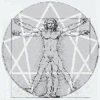“Man is a complex organization,” he said, “consisting of four parts which may be connected or unconnected, or badly connected. The carriage is connected with the horse by shafts, the horse is connected with the driver by REINS, and the driver is connected with the master by the master’s voice. But the driver must hear and understand the master’s voice. He must know how to drive and the horse must be trained to obey the REINS. As to the relation between the horse and the carriage, the horse must be properly harnessed. Thus there are three connections between the four sections of this complex organization. If something is lacking in one of the connections, the organization cannot act as a single whole. The connections are therefore no less important than the actual ‘bodies.’ Working on himself man works simultaneously on the ‘bodies’ and on the ‘connections.’ But it is different work. Fragments: Five
“Work on oneself must begin with the driver. The driver is the mind. In order to be able to hear the master’s voice, the driver, first of all, must not be asleep, that is, he must wake up. Then it may prove that the master speaks a language that the driver does not understand. The driver must learn this language. When he has learned it, he will understand the master. But concurrently with this he must learn to drive the horse, to harness it to the carriage, to feed and groom it, and to keep the carriage in order — because what would be the use of his understanding the master if he is not in a position to do anything? The master tells him to go yonder. But he is unable to move, because the horse has not been fed, it is not harnessed, and he does not know where the REINS are. The horse is our emotions. The carriage is the body. The mind must learn to control the emotions. The emotions always pull the body after them. This is the order in which work on oneself must proceed. But observe again that work on the ‘bodies,’ that is, on the driver, the horse, and the carriage, is one thing. And work on the ‘connections’ — that is, on the ‘driver’s understanding,’ which unites him to the master; on the ‘REINS,’ which connect him with the horse; and on the ‘shafts’ and the ‘harness,’ which connect the horse with the carriage — is quite, another thing. Fragments: Five

